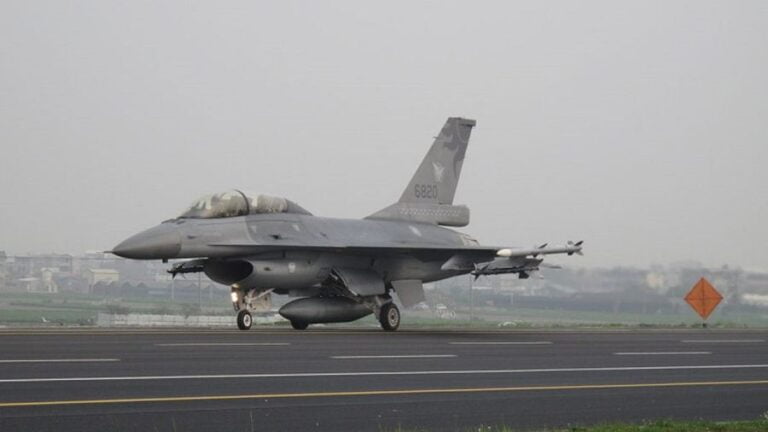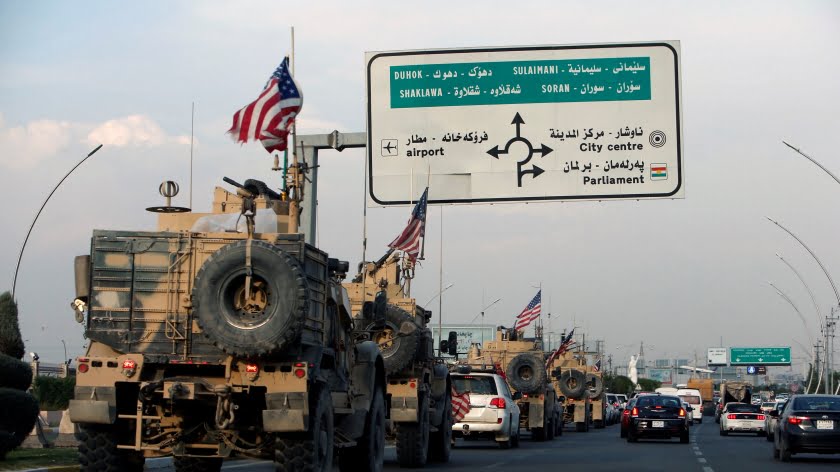How NATO Trainers Knowingly Sent Ukrainian Troops to Their Deaths
Ukraine sent one of its best brigades into combat earlier this month as part of its long-awaited counteroffensive aimed at retaking areas controlled by Russian forces.
Leading the charge near the town of Orekhov, in Zaporozhye Region, was the 47th Mechanized Brigade, armed with NATO equipment and – most importantly – employing it using the US-led bloc’s combined arms doctrine and tactics. Prior to the operation, this brigade spent months at a base in Germany learning “Western know-how” in combined-arms warfare.
Helping them prepare for the fighting to come was KORA, the German-made NATO computer simulation system, designed to allow officers and non-commissioned officers to closely replicate battlefield conditions and, in doing so, better develop ideal courses of action against a designated enemy – in this case, Russia.
If there was ever an example of how a purpose-built Ukrainian NATO proxy force would perform against a Russian enemy, the 47th Brigade was the ideal case study. However, within days of initiating its attack, the group was close to literally decimated, with more than 10% of the over 100 US-made M-2 Bradley infantry fighting vehicles destroyed or abandoned on the field of battle, and hundreds of the brigade’s 2,000-strong complement dead or wounded. German-made Leopard 2 tanks and mine-clearing vehicles joined the Bradleys as wrecks in the fields west of Orekhov, having failed to breach the first line of Russian defenses. The reasons for this defeat can be boiled down to the role played by KORA in creating a false sense of confidence on the part of the officers and men of the 47th Brigade. Unfortunately, as the Ukrainians and their NATO masters found out, what works in a computer simulation does not automatically equate to battlefield success.
KORA is a computer-based advanced synthetic wargaming system developed by the German army to support course-of-action analysis and scenario-based experiments for staff officers up to the brigade level. It has been incorporated into NATO computer wargame simulations in support of live training done at the US Army’s Grafenwoehr training facility. Grafenwoehr hosted the 47th Brigade from January-May 2023. While capable of generating generic terrain maps for combat simulation against a notional enemy, KORA can be customized using actual terrain models and real-world order of battle to support preparations for actual combat scenarios.
It is, undoubtedly, in this mode that KORA operated while being used to train the 47th Brigade, using digitized maps of the Orekhov area superimposed with Russian defensive positions manned by units from the 42nd Motorized Rifle Division, namely the 291st and 70th Motorized Rifle Regiments. With the assistance of their NATO instructors, the officers of the Ukrainian 47th Brigade would likely have gamed-out several real-life scenarios which anticipated Russian performance, allowing the Ukrainians to forecast battlefield results and determine the ideal axis of advance capable of breaching the Russian defenses.
Of all the military operations training KORA is capable of, the breaching of a fortified defensive line is the most difficult. US Army doctrine uses the mnemonic SOSRA (suppress, obscure, secure, reduce, and assault) when teaching breaching assault fundamentals. Each one of these would have required a separate KORA sub-model specifically designed to simulate the unique mission requirements attached to them. But the fact is that the SOSRA fundamentals could not be properly exercised for the Ukrainians for the simple truth that they lacked the resources necessary for the tasks to be executed.
Take for instance “suppression.” According to the US Army, “Suppression is a tactical task used to employ direct or indirect fire or an electronic attack on enemy personnel, weapons, or equipment to prevent or degrade enemy fire and observation of friendly forces.” KORA would need to employ at least four sub-models in support of the main simulation to create an adequate suppression model, including air interdiction, air defense, electronic warfare, and artillery fire. However, Ukraine lacks any viable offensive air capability, and thanks to systemic Russian suppression of enemy air defense (SEAD) operations, Ukraine’s forward operating areas, where units such as the 47th Brigade would assemble and operate from, were left nearly defenseless against Russian air power. Moscow’s artillery and electronic warfare superiority likewise nullified any tactical advantages Ukraine envisioned by employing these resources. The purpose of suppression during breaching operations is to protect the forces tasked with reducing and maneuvering through an obstacle. “Suppression,” the US Army notes in its doctrinal statements, “is a mission-critical task performed during [a] breaching operation. Suppression generally triggers the rest of the actions at the obstacle.” In short, without adequate suppression, the entire attack will fail.
Logic dictates that any responsible use of the KORA simulation system would have predicted the failure of the 47th Brigade’s attack. According to The Washington Post, the officers of the 47th Brigade “planned their assaults and then let the [KORA] program show them the results – how their Russian enemies might respond, where they could make a breakthrough and where they would suffer losses.” The KORA simulation allowed the Ukrainian officers to coordinate their actions “to test how they’d work together on the battlefield.” Given that the Ukrainian force structure was insufficient to accomplish the mission-critical task of suppression, there was no chance for the Ukrainian forces to accomplish the actual assault requirements of a breaching operation – the destruction of enemy forces on the opposite side of the obstacle barrier being breached. The Ukrainians, however, came away from their KORA experience confident that they had crafted a winning plan capable of overcoming the Russian defenses in and around Orekhov.
When one examines the structure of a KORA-based simulation, it becomes clear that the system is completely dependent upon the various inputs which define the simulation as a whole. Every aspect of the simulation is derived from the parameters programmed by those responsible for overseeing the training. While one would hope that the training overseers would conduct the simulation with a modicum of professional integrity, unless both the NATO trainers and their Ukrainian students were infused with Lemming-like suicidal qualities, there had to be significant modification and alteration of critical data points to generate an outcome capable of motivating the Ukrainian forces to agree to the attack.
One would expect that the performance characteristics for the attacking force, while capable of being exaggerated, would replicate the reality of the genuine capabilities of the involved forces to a relative degree – to believe otherwise would suggest that the Ukrainians were completely delusional, something their own description of a “learning curve” during training argues against. One of the critical factors used in the programming of KORA, however, is what KORA’s designers call “behavior agents” used for establishing rules “for behavior of the respective units.” It is here that the NATO trainers most likely failed their Ukrainian trainees.
The Orekhov axis of advance was designed to exploit a seam between the 291st and 70th Motorized Rifle Regiments of the Russian 42nd Motorized Rifle Division. The “behavior agents” programmed by the NATO trainers appeared to treat the Russians – especially those from the 70th Regiment – as poorly trained, poorly led, poorly equipped, and poorly motivated troops. In short, NATO trainers compensated for the inability of Ukraine to assemble forces capable of performing even the most basic of suppression tasks by predicting the inevitable collapse of the will on the part of the Russian soldiers to resist. The “behavior agent” emphasized by NATO appears to be derived from the famous encounter between the knights of the Round Table and the “killer rabbit” in Monty Python’s Search for the Holy Grail – “Run away! Run away!” The real-life Russian defenders, however, had the exact opposite performance response. According to the Institute for the Study of War, the Russians “responded to the Ukrainian attack with an uncharacteristic [sic] degree of coherency” while executing “their formal tactical defensive doctrine” in repelling Ukrainian attacks southwest of Orekhov.
The reality is that the Ukrainians never even got close to reaching the Russian defenses around Orekhov, let alone breaching them. The reasons for this failure are many, including unfamiliarity with the Western-style equipment the 47th Brigade was employing, poor tactical planning, and – most importantly – the failure of the Ukrainians to suppress Russian artillery fire, electronic warfare capabilities, and air power, which made the tactical breach of the Russian obstacle belts – especially the dense minefields – impossible. All these failures were predictable, which means that to overcome them during the training phase, the NATO trainers had to deliberately “game” the KORA system in order to obtain the desired outcome.
I can speak with some authority about the role played by computer simulations in preparation for an assault against a fortified position. In October 1990, I was tasked by Headquarters Marine Corps with conducting a computer simulation using the newly procured JANUS conflict and tactical constructive simulation system to assist Marine operational planners deployed in Saudi Arabia in their mission of breaching prepared Iraqi defensive positions on the border between Kuwait and Iraq. The Marines had been ordered by Army General Norman Schwartzkopf to conduct a two-division-strong frontal assault on the Iraqi defenses. The attack was part of a “fixing action” designed to prevent Baghdad from diverting forces in response to the main attack, to be carried out by the US Army, on the Iraqi western flank.
The Commander of Marine Forces in the Persian Gulf, General Walt Boomer, had approached Major General Matthew Caulfield, the director of the Marine Corps Warfighting Center, in Quantico, Virginia, for help in picking the most advantageous sectors of the Iraqi defenses for Marine breaching assault operations using a graphical user interface. In September 1990, I had been plucked out of Amphibious Warfare School to provide planning support for an ad-hoc team assembled by General Al Gray, the Commandant of the Marine Corps, to design alternative options to the frontal assault being pushed by General Schwartzkopf. The results of this effort – a corps-sized amphibious assault on the Al Faw peninsula, was approved by General Gray, but ultimately rejected by General Schwarzkopf. The brought the Marines back to square one – where best to conduct what many viewed as a suicidal assault on dense Iraqi defensive fortifications.
As one of the principal authors of the Al Faw proposal, my profile was quite high in the rarified air of Quantico, especially for a junior Captain. Major General Caulfield tasked me with using the JANUS system to wargame various options that could be used by General Boomer’s Marines to breach the Iraqi defenses. I knew nothing about either JANUS or computerized simulations. Fortunately, I had a team of enlisted Marines who were knowledgeable and they had been using JANUS to exercise the students at the Command and Staff College. Even so, JANUS was still new for the Marines. The US Army had been using JANUS since 1983, including to conduct simulations in support of the US invasion of Panama in 1989. It was also used in designing General Schwartzkopf’s planned attack on the western flank of the Iraqi defenses. However, the Marine experience with JANUS began only in August of 1990, and then only in support of training. My assignment represented the first ever Marine Corps operational use of JANUS in support of a real-world scenario.
After being briefed by my team about the various inputs that would need to be programmed into JANUS to run the requested scenarios, I set about collecting detailed aerial photographs from the CIA so we could build accurate terrain maps of the defenses the Marines would be tasked with breaching. I also got the NSA to provide me with a detailed order of battle of the units occupying the defenses, including reports on their combat history, performance, and leadership. I tasked my Marines with collecting similar data on the Marine units expected to lead the assault. We then carefully programmed the JANUS computer and hit “enter.”
The result was a disaster – the Marines were annihilated before they ever reached the Iraqi defenses.
I sat down with my Marines and dissected the data. Two things became apparent – we had over-programmed the Iraqi capabilities, and under-programmed Marine suppression actions. But I wouldn’t simply allow the system to be “gamed.” I worked with my Marines to define what actions would have to be taken to reduce Iraqi capabilities, and to define the resources needed by the Marines to suppress the Iraqis while accomplishing their assault breaching tasks. For more than a month straight, my team ran the simulation repeatedly, each time pausing to evaluate the lessons learned, before undertaking the time-intensive task of properly programming the data into the JANUS system. Finally, in early November, we had a solution that worked. Major General Caulfield oversaw the final “proof of concept” JANUS simulation. Afterwards, he ordered me to prepare a report, which he then sent to General Boomer.
One of the things I’m most proud of in my military career is the fact that the Marine assault breaching operations done during Desert Storm unfolded almost exactly as my team and I had predicted in the JANUS simulation. After the war, General Caulfield credited my team and I with playing a major role in designing the successful Marine attack and, in the process, saving hundreds of Marine lives. We achieved this result by adhering to basic principles of professionalism and integrity, refusing to cut corners for the sake of expediency and being realistic about the amount of military combat power that would be needed to be applied over time to achieve the desired result.
If only the NATO trainers, who knowingly sent the men of the Ukrainian 47th Mechanized Brigade and scores of other Ukrainian brigades to their deaths, adhered to such standards. Instead, they sent those troops in a futile attempt to breach defenses that were impossible to overcome, given the disparity in training and force composition between the Ukrainian and Russian forces. Had they been diligent, there would be far fewer Ukrainian widows and orphaned children mourning the loss of their husbands and fathers. This, more than anything, is the primary lesson to be derived from the Ballad of KORA and JANUS – neither NATO nor the United States cares about the lives of the Ukrainians they have undertaken to train in the horrific art of war.
Apparently, Republican Senator Lyndsey Graham is not alone in aspiring to continue the Russian-Ukrainian conflict until Kiev runs out of cannon fodder. Based upon the results at Orekhov earlier this month, “to the last Ukrainian” appears to be the overall NATO battle cry as well.







